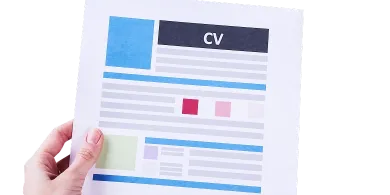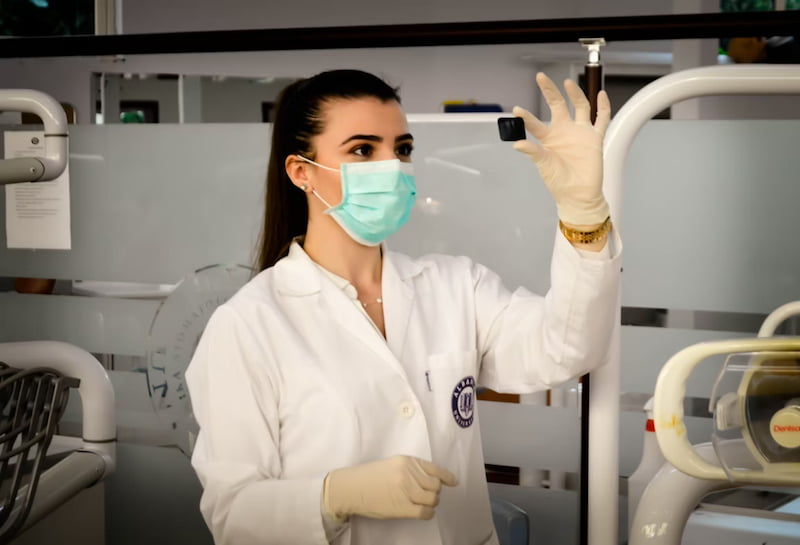Table of contents
A charge nurse isn’t just a nurse with experience — they’re the person everyone turns to when things get busy. Whether it’s managing a team, solving problems on the fly, or making sure patients get the proper care, charge nurses are essential to keeping a unit running smoothly. A well-crafted resume by a professional nurse resume writing company proves you can lead, stay organized, and deliver great care under pressure. In this article, you’ll learn how to pick the best format, write each section step by step, and tailor your resume to match your desired job.

If you’re applying for a charge nurse job with the help of online resume writers, you need more than nursing skills. Employers expect you to be a leader, a mentor, and a problem-solver — all at once. They want to see examples of your ability to manage staff, handle emergencies, and maintain high standards of care. Strong charge nurse candidates have a mix of technical skills and the judgment to make quick decisions when it counts.
When writing your resume, use keywords employers expect to see. Terms like charge nurse, clinical supervision, patient safety, and quality improvement can help your application get noticed by both hiring managers and applicant tracking software. Review real job postings before you apply. Pay attention to repeated phrases and be sure you include them — only when they reflect your experience — to make your resume relevant and credible.
Before writing your resume, it’s important to think about how you want to present your work history. The format you choose influences what stands out first—your recent jobs, your skill set, or your strengths as a candidate. Each structure works best in different situations.
| Format | Best For |
| Reverse-Chronological | Steady experience and clear promotions |
| Combination | Solid skills plus consistent work history |
| Functional | Career changes or less experience as a lead |
This is the most used format in healthcare hiring. It places the most recent role first, followed by previous positions. Most HR systems are set up to scan this layout efficiently. In a recent review of over 1,000 job applications in hospitals, more than 70% used this format. It works best when there are no long gaps in employment. Recruiters can easily track job titles, dates, and locations, which speeds up shortlisting.
Around 1 in 4 resumes uses a combination format. This setup starts with a brief skills summary, then lists jobs in order. It’s often used by nurses with varied duties, such as clinical care, documentation, and team coordination. Including a few grouped skills at the top can help highlight tasks like managing patient flow or training junior staff. After this, the job history section confirms where these tasks were carried out.
Fewer than 5% of applications in hospital settings use the functional format. This format removes focus from dates and emphasizes grouped skill areas. It is mainly used by candidates returning to work, switching specialties, or covering gaps. Skill sections may include wound care, medication tracking, or telehealth support. Still, many applicant systems rank resumes lower when dates are missing, so this format can carry more risk.
Creating a strong charge nurse resume doesn’t have to feel overwhelming. If you break it down step by step, you can build a document that highlights your experience, skills, and impact. The following actions can help you create a charge nurse resume that will stand out to potential employers:

Your header sets the tone for your whole resume. Make it clear and professional so hiring managers can reach you easily. A clean header helps applicant tracking systems match your name with your application file. Here’s what to include:
The summary at the top of your resume should tell in two or three short sentences why you’re a good fit for the job. Keep it simple. Say how long you’ve worked, what kind of nurse you are, and something you’ve improved or achieved.
A good summary explains what you’ve done in your role and what changed because of it. Avoid saying things like hardworking or team player, as these don’t provide clear information. Listing traits like organized or detail-oriented without any context doesn’t help either. It’s more useful to describe how you used those strengths in your actual job.
When you write about your past jobs, don’t just list what you were “responsible for.” Be clear about what you actually did and what came out of it. Use simple, direct language and back it up with numbers when you can. Here’s a side-by-side look to help you say things more clearly:
| Less Effective | Stronger |
| Responsible for training staff | Trained 12 new nurses on EMR and patient safety protocols |
| Helped improve patient care | Improved patient satisfaction by 28% after changing daily workflow |
| Oversaw nurses | Supervised 15 RNs and CNAs on a 30-bed surgical unit |
The stronger examples don’t just say what the job was—they show what was done and what changed because of it. That makes it easier for someone reading your resume to see the results you’ve delivered. Moreover, if you worked with a team, say how many people. If you improved something, explain how and what the result was. Be specific, be clear, and stick to real actions. That’s what makes your work history stand out.
Your skills section gives hiring teams a quick overview of what you can do. It helps to group your skills by type, such as leadership tasks like mentoring or scheduling, clinical tasks like triage or wound care, and technical tools like EMR systems or telehealth platforms. You can also include soft skills such as communication and time management, but keep them tied to real tasks.
When reviewing resumes, employers often look for a mix of task-based and team-based skills. Including one technical skill and one leadership-related skill makes your profile more balanced. Focus only on skills that match the role you’re applying for and avoid adding general traits without context.
Your education and certifications show that you meet the requirements for the role. Start with your highest degree, active licenses, and relevant certifications. For example, you might list a Bachelor of Science in Nursing from the University of Michigan, followed by your current RN license and certifications. Here’s a sample format:
If a certification helped you improve something at work—such as lowering fall incidents after ACLS training—you can mention that briefly. It connects your qualifications to actual results.
These parts are not required, but they can help strengthen your resume, especially if they support the role you’re applying for. Many hiring managers spend less than 8 seconds scanning a resume, so anything that quickly shows your involvement beyond daily tasks can help. For example, industry surveys show that about 30% of healthcare resumes include at least one professional membership, and applicants with relevant certifications or community work are more likely to be shortlisted for interviews. Here are some examples of what to add:
These sections can give employers more to ask about in interviews and show that you stay active in your profession. Make sure anything you list is current, accurate, and related to the role you’re applying for.
Before sending your resume, check that it fits the specific role you’re applying for. A one-size-fits-all version usually gets overlooked. Read the job posting closely and notice repeated terms like patient safety, clinical leadership, or quality improvement. Use those same words in your summary, skills, and work sections if they apply to your background. This makes it easier for automated systems to flag your resume as a match.
It also helps to keep your resume easy to read for both software and people. Skip charts, images, and unusual designs. Use a standard font like Arial or Calibri, keep the size between 10 and 12, and space out your sections. Save your resume as a Word document or PDF, depending on what the job listing says. These steps improve your chances of getting noticed in the first round.

Before you send your resume, take a final moment to check that everything looks clean and makes sense. Even minor errors or messy formatting can cause your resume to be passed over. A simple layout and clear structure make it easier for someone to read quickly. Use this quick checklist to wrap up:
Read through your resume line by line—reading it out loud can help catch small mistakes. You can also use a basic spell checker or a tool like Grammarly. Keep the final length between one and two pages. Remove something that doesn’t add value or relate to the job. A short, focused resume often does better than a longer one filled with extras.
If you’re unsure how all the parts of your resume should come together, here’s a simple example to use as a guide. It shows how to organize your contact information, summary, work history, skills, and certifications in a clear and direct format:
Emily Jackson, RN, BSN
Austin, TX | (555) 123-7890 | [email protected] | linkedin.com/in/emilyjacksonRN
Professional Summary
Charge Nurse with 7 years of experience leading busy hospital units. Improved patient safety scores by 20% and trained a team of 18 nurses on updated protocols.
Experience
Charge Nurse, Riverside Hospital
2018–Present
Skills
Certifications
RN (Texas), BLS, ACLS, CCRN
A charge nurse resume should show that you can lead a team, manage shifts, and carry out patient care tasks. It’s not just about listing job titles—employers want to see what you’ve done in each role. This might include updating safety procedures, training new staff, or reducing patient wait times. These kinds of results help show what you’ve handled on the job.
The best nursing resume writers onine will make sure your resume includes both leadership duties and clinical responsibilities. Add recent outcomes when possible, such as how you supported a new system or helped meet department targets. Keep your resume updated with any changes to your role, and adjust it to fit the job posting by using the same terms the employer uses. This helps your resume get noticed and passed through screening systems.